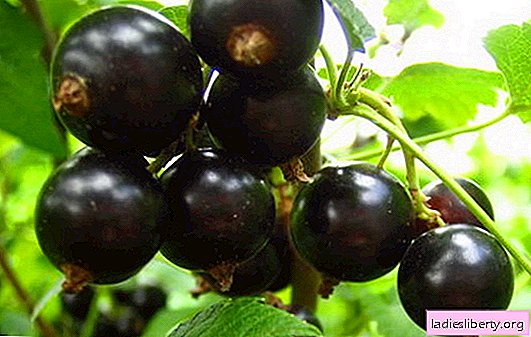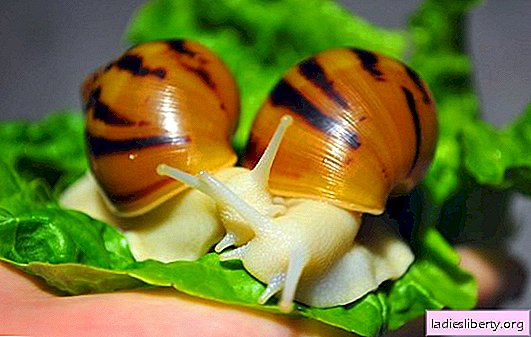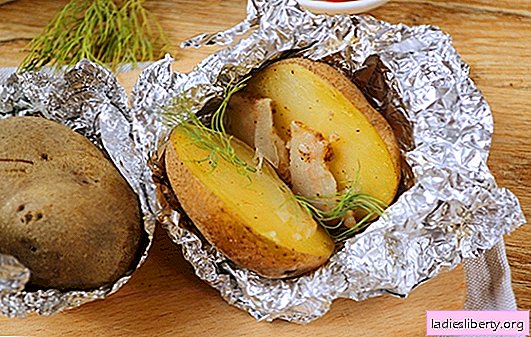
Currant, without a doubt, one of the berries growing in almost every country house and areas near the house.
This is a deciduous shrub, giving edible berries, capable of growing to a height of 1-2 m, depending on the species.
The berries of this plant can be of different colors - black, yellow, white or red fruits.
In addition to the excellent taste of currant berries, they are very useful for the human body, it is often used in various recipes of both traditional and official medicine.
There are approximately 140 species of this plant growing around the world.
Currant: types
Black currant. This type of plant is grown most often on personal plots. This currant has very aromatic berries, they have a lot of microelements and vitamins, it contains a lot of vitamin C. Many different varieties of this culture have been developed that differ in plant size, shape, taste and weight of berries, resistance to pests and diseases. Using pollination of blackcurrant with related species, breeders have created many different species of this culture without pigmented particles. As a result, they were bred - golden, pink, red and white currants, which differ in color and taste of berries.
Red currant. A bush grows up to two meters high, the fruits are a spherical berry of red color. This plant, by the distribution and number of cultivated varieties, only loses a little black. Red currant is quite unpretentious culture.
White currant. A subspecies of red currant, only there are no red dyes in it. There are fewer varieties of this variety of currant than the varieties described above, but it is also popular with gardeners.
Pink currant. A kind of red currant, in which the fruits are painted in a beautiful pink color, the main advantage of this species is a pleasant dessert taste.
Golden currant. It was imported from North America, a straight bush grows up to two meters with a decorative crown. Large berries grow on them from light yellow to brown in color with a sweet and sour taste. Berries when ripe, hang on branches for a long time, not falling off, look resistant to low temperatures, like sunlight, but can withstand slight shading, among all currants the most drought-resistant species. For good fruiting, several bushes should be planted nearby for pollination. It is used not only to obtain a crop of berries, but also when arranging hedges, as an ornamental plant due to beautiful foliage in the autumn. Shrubs can be given almost any shape, golden currants can withstand haircuts.
Currant: varieties
Belorussian sweet. Self-fertile variety, gives large-sized berries. It is resistant to anthracorosis and to a kidney tick.
Boscopic Giant. Medium early variety, spreading plant of medium size. The berries are large, sweet and sour, at the base of the leaf there is a noticeable notch.
Gross. Late-ripening variety produces very large berries weighing up to 5 g. It is resistant to fungal diseases.
Kent. Late-ripening variety, cysts are low, slightly spreading, berries are large, sour, high-yielding variety.
Moscow. Winter-hardy, self-fertile, early ripe variety with large berries, average productivity. It is resistant to a kidney tick and terry.
In memory of Potapenko. The plant is of medium height, spreading, the berries are large and tasty, the average yield. High resistance to ticks and fungal diseases.
Treasure. Mid-season variety, low bush, small volume, gives large, tasty berries.
Enchantress. Mid-season variety, large bush, gives brilliant, large berries, dessert taste. Increased resistance to pests and diseases, productive variety.
In addition to the above, there are many more varieties of black currant.
Currant: planting
Blackcurrant propagates by layering (this plant in a short time grows new roots on shoots sprinkled with earth), cuttings, dividing the old bush, green currant cuttings quickly take root. But it is better to plant it in the autumn, in spring the plant will take root well and begin to grow.

Blackcurrant cuttings
The soil for planting blackcurrant needs fertile soil, best of all with a slightly alkaline reaction, light loam is best suited for this crop. It is advisable to plant currants in well-lit areas, but a small shade is acceptable (berries in the shade will contain less sugar and the yield will decrease slightly).
Dig the soil on the site before planting the bushes and make fertilizers. Between separate bushes it is enough to leave a space of about 1.5 meters. For the root system, dig a hole with a diameter of 50 cm and 40 cm deep. Half a bucket of water is poured into it when the plant is planted, it is watered additionally with a half bucket of water and the soil under the bush is mulched with peat or rotted humus. The currant roots are close to the surface, for this reason they are sensitive to moisture of the soil surface. But there should be no stagnation of water.

Currant seedlings
Currant: care
This culture during flowering and the formation of ovaries needs foliar top dressing.
Basic rules of care, it is necessary:
• Loosen the soil under the plants regularly;
• exterminate weeds;
• Fertilize the soil;
• Remove dried branches;
• Instead of old bushes, plant young
• Destroy pests and fight diseases.
In the spring, after the snow melts, the roots of the shrub begin to grow vigorously, they may not have enough moisture and nutrients. Watering plants need only warm water, often summer residents water the currant bush from above, as a result of constant moisture on the leaves can cause the appearance of powdery mildew.
During the summer period, it is necessary to maintain the soil in a loose state, but keep in mind that loosening is carried out carefully so as not to touch the roots, often located at a depth of 3-5 cm. If you pour a 5 cm layer of mulch from organic material, you can not loosen the soil under the bushes. While young trees grow in the country garden, currant bushes must be shaded from the direct rays of the summer sun (in nature currants grow in partial shade, plants do not withstand the heat).
Pruning
After planting the plants in a permanent place, the bush is immediately cut off, leaving 2-3 developed buds on the branches. The next season, remove all weak and unripe shoots, grown small shoots. No more than 4 powerful and developed shoots are left on the bush, which will subsequently become skeletal branches. At the age of three, many first-order shoots appear on the currant bush, most of them are cut, leaving the top five of them. For 4-5 years, the plant should have 15-20 skeletal branches that need to be pruned annually.

Pruning
Currants grow and yield different crops in different varieties, for this reason, according to the method of pruning, the plants are divided into 3 groups.
1. Varieties of the first group, annually produce many zero shoots from the root, which are weakly branched. For this reason, these shoots are very pruned, which significantly enhances branching, 4-year-old branches are completely removed.
2. Varieties of the second group, weakly forms shoots of the zero order, but their adult branches are well branched. For this reason, it is not easy for them to create a bush with the necessary number of shoots of different ages. To eliminate this drawback, zero shoots of such plants are almost not cut, and in order to strengthen the formation of a new shoot, old branches (aged 5-6 years) are regularly removed and tops are cut on them.
3. Varieties of the third group - intermediate between plants of the first and second groups, they grow the average number of young shoots and medium-branched. The shoots bear fruit for a long time (about 6 years), they are cut off like the plants of the second group, only the shoots are shortened more.
Currant: diseases
Terry. Common blackcurrant disease. Plants on which this disease has developed strongly cease to produce berries. The disease gradually spreads to healthy branches of the bush, and both healthy and diseased flowers can be present on the same plant at the same time. Swollen kidneys can often be found on diseased bushes - this is a sign of the presence of a kidney tick, which spreads terry. Sick plants recover very rarely, the disease progresses annually and the bush becomes completely barren. Such plants need to be uprooted and destroyed.
Anthracnose. This is a fungal disease of currant, it can be detected when small spots of brown color appear on the leaf blades. The sheet tissue becomes brown in time, the sheet begins to dry and falls off.
This disease also affects parts of the plant such as:
• Pedicels;
• Young shoots;
• Petioles of leaves.
Anthracnose is very harmful after mid-summer, especially for mature leaves. The mushroom spends the winter period on fallen sick leaves. The disease is transmitted with water, occasionally spreads through insects.
Fighting the disease:
1. In the autumn, after the leaves on their bushes fly around and the soil under them is treated with a 3% nitrafen solution;
2. In the summer period, 1% colloidal sulfur and a suspension of cuprosan are used for processing. The treatment is carried out before flowering, re-sprayed after the plants bloom, again two weeks after the second treatment and the last time after harvesting. For spraying, Bordeaux liquid with a concentration of 1% can be used.
3. Agrotechnical methods of control consist in thinning out thick plantings, exterminating weeds, digging up the soil under bushes, and destroying leaves that have fallen from the plants.
Currant: pests
Kidney tick. One of the most harmful pests of currants, greatly enlarged buds, is a clear sign of the appearance of a kidney tick. In spring, these buds do not bloom, but loosen in such a way that spoiled leaves appear, after a time the buds die, which causes a significant decrease in yield. Each diseased kidney may contain thousands of ticks. In addition, this pest is a carrier of such a disease as terry.
Pest control:
1. Removal of infected shoots in early spring;
2. Processing the bushes during the formation of inflorescences with a suspension of colloidal sulfur (75 g of the drug per bucket of water);
3. Spraying the faded bushes with lime-sulfur infusion;
4. Treatment of plants after flowering with 0.5% ether sulfonate.
Currant aphids. The pest can be detected by twisted and wrinkled young leaves, on their underside there are a lot of light green larvae.
Pest control:
1. Before the swelling of the kidneys to destroy the eggs of the pest, the plants are treated with 3% nitrafen;
2. Processing currant chlorophosomes (concentration per bucket of water 20 g of the drug) with the addition of trichloromethaphos-3 (20 g);
3. When aphids appear, treatment of plants with 0.2% solution of 0.4% soap and anabazine sulfate.











